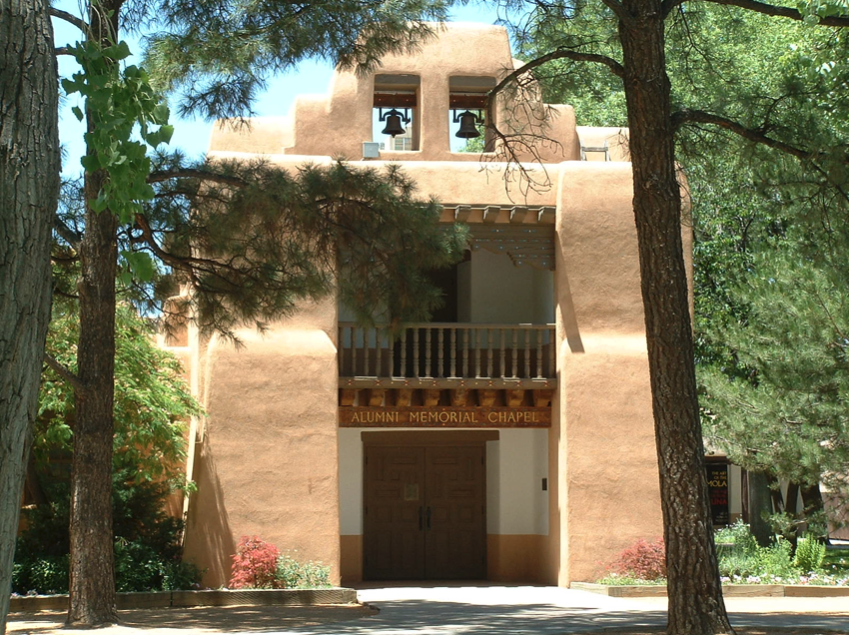
Crossroad of Loss and Inception
1960
The Alumni Memorial Chapel opened its doors to the students of UNM and the general public on February 28, 1962, after more than twelve years of planning and fundraising. The Chapel was erected as a memorial to the universities’ own fallen soldiers who, at the time, served during WWI, WWII and Korea; eventually coming to honor the soldiers who died in Vietnam, Iraq and Afghanistan. Construction of the Chapel was completed in the Fall of 1960, coming to fruition through the contributions of 2,749 alumni and 574 friends & groups, who altogether raised $91,149.53 between 1948 and 1961. Although the Chapel isn’t dedicated to any one denomination of religion, it was designed in the style of a Franciscan Mission with Puebloan influences, matching the architecture of existing buildings on campus. The Chapel is adorned with two railway engine bells, donated by Atchison, Topeka and Santa Fe Railway Company in 1961. After the completion of the basic structure, the funding for the project had begun to run dry. The carving of the memorial retablos, donning the names of the fallen, were left undone until a gift of $1,000.00 from Mrs. Jethro Vaught and her brothers, bringing the long awaited, official dedication to realization in early 1962.
Despite the Chapel’s intent of sober reflection, the Chapel has been the host of many beginnings, serving as the venue for numerous weddings on its grounds further connecting students and alumni to the campus. The first use of the Chapel was for the wedding of two students held January 27, 1961, followed subsequently by two others, inaugurally ringing its’ two bells during the third wedding on June 10, 1961. Today, the chapel remains a place of remembrance and rumination, serving as a quiet refuge from the busy campus that surrounds it, while also continuing to remain a prominent venue for weddings. The Chapel serves as an important landmark to the contribution of New Mexicans during times of war, and more specifically, of UNM’s students’ ultimate sacrifice for our nation.
Vincent N. Sandoval, History, ‘20
